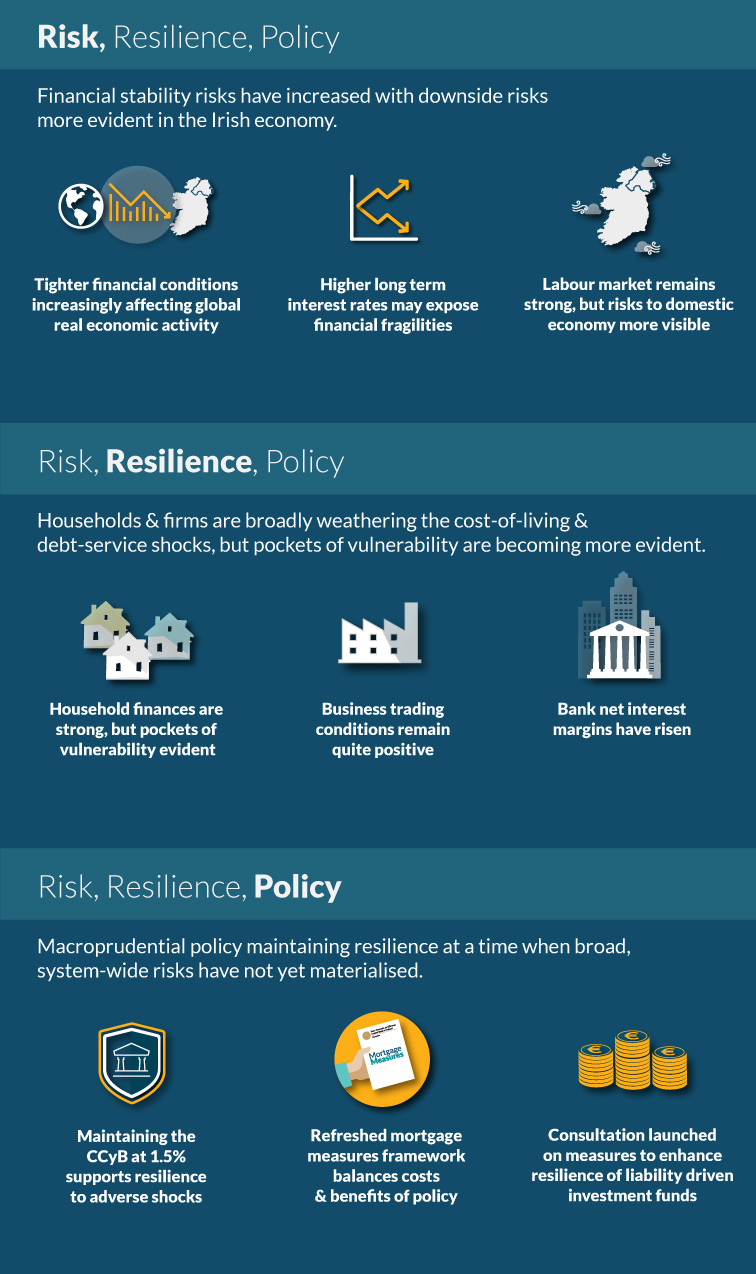Financial Stability Review 2023 II
Transcript of the video "Risks and Outlook for the Financial System (November 2023)"
The financial stability outlook continues to be shaped by the adjustment of the global economy to higher interest rates. Global inflation has proven persistent, and policy interest rates remain restrictive. Higher long-term interest rates and tighter financial conditions leave financial markets vulnerable to disorderly corrections. The global economy is subject to the risk of further inflationary shocks, while uncertainty remains about the ultimate magnitude of the effects of tighter monetary policy on the global real economy.
Despite this global backdrop, the domestic economy has continued to expand, albeit at a slower rate. Downside risks are more immediately visible now relative to the last Review, for example through continued falling commercial real estate (CRE) prices and early evidence of a slowdown in export flows and corporation tax receipts following years of exceptional growth. The resilience of the household and corporate sectors continues to benefit from the strength of the labour market and low indebtedness, although there are emerging tentative signs of repayment difficulties for some vulnerable borrowers.
Increased bank profitability has continued since the last Review, strengthening banks’ capacity to invest for the future and bolstering resilience to shocks. The Central Bank’s macroprudential policy stance aims to maintain resilience at a time when broad, systemic risks have not crystallised. Reflective of this position, the Central Bank is maintaining the CCyB at 1.5 per cent, and continues to deepen the macroprudential framework for non-bank financial intermediation.
Financial Stability Review 2023: II | pdf 1259 KB
 FSR 2023 II Risk Chartpack | xlsx 489 KB
FSR 2023 II Resilience Chartpack | xlsx 655 KB
FSR 2023 II Macroprudential Policy Chartpack | xlsx 160 KB
FSR 2023 II Box Chartpack | xlsx 181 KB
FSR 2023 II Risk Chartpack | xlsx 489 KB
FSR 2023 II Resilience Chartpack | xlsx 655 KB
FSR 2023 II Macroprudential Policy Chartpack | xlsx 160 KB
FSR 2023 II Box Chartpack | xlsx 181 KB
See also: